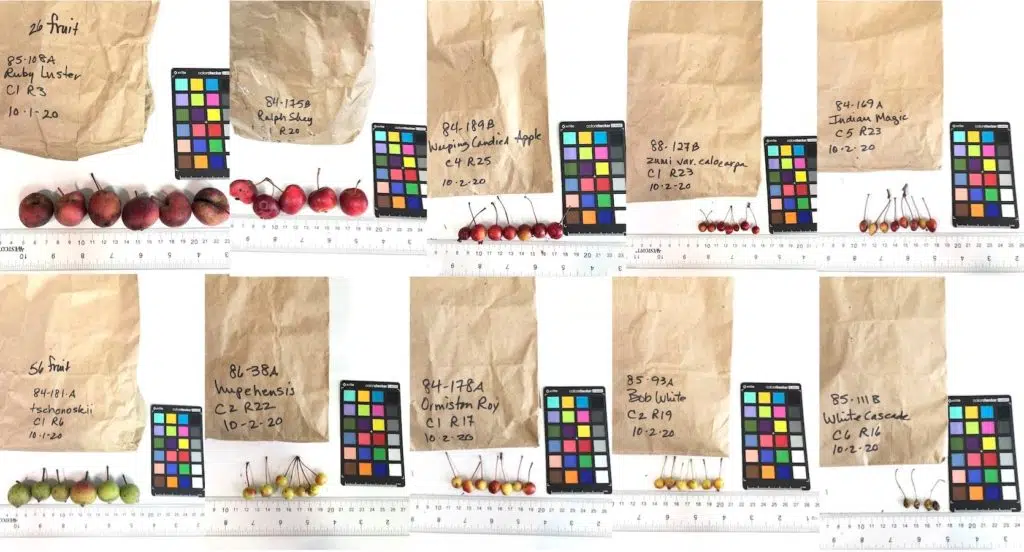Harnessing microbiomes in crabapples: II. Getting seeds for testing microbiome functions
June 12, 2020

By Na Wei and Jessica LaBella
Plants are associated with numerous microorganisms in the wild. Some of these microorganisms are beneficial but others, such as pathogens, can be harmful to plants. Thus, maintaining a healthy microbiome is key to plant health. For crabapples (i.e. the wild apples, Malus), we have observed that some crabapple cultivars/species are more disease resistant than others at the National Crabapple Evaluation Project Plot at Holden. Our previous work published on the Malus: International Ornamental Crabapple Society Bulletin with Holden students Jessica LaBella and Eve Kaufman has identified many fungi associated with crabapples.
Our next step is to test whether microbiomes from resistant crabapples can be used to benefit susceptible crabapples for disease resistance. To do this, we plan to inoculate resistant microbiomes to sterile, susceptible crabapple seedlings to see which and how microbes can help to deal with such biotic stress. As a first step, we are currently working on obtaining sterile crabapple seedlings for the inoculation experiment. This involves collecting crabapple fruits (Figure 1), extracting seeds (Figure 2), and sterilizing and germinating seeds on culture media (with seed coat removed).

Figure 1. Crabapple fruits.
Here, we would like to share how we extracted seeds from crabapples for our incoming experiments. Very different from the apples at grocery stores, crabapple fruits are a lot smaller and very diverse in size, color, and shape (Figure 1). Given such small fruits, extracting crabapple seeds are not that easy. This process involves:
- Soaking crabapple fruits in water with diluted bleach for several days to soften the pulp (Figure 2).
- Cutting the small fruits open with a sharp scalpel to remove seeds into water. Since well-developed seeds will sink to the bottom, it is easy to remove undeveloped seeds floating on the surface (Figure 2).
- Spraying diluted bleach onto extracted seeds and dry them on a flat tray and then inside a plastic cup (Figure 2).
- Labeling and storing the extracted seeds in the cold room until we begin the experiments (Figure 3).
Figure 2. Extracting seeds from crabapple fruits.
Similar to crabapple fruits, crabapple seeds are also diverse in size, color, and shape. These seeds will be sterilized and germinated on culture media for our incoming experiments to test microbiome functions. So, stay tuned for the next episode!

Figure 3. Crabapple seeds.
















